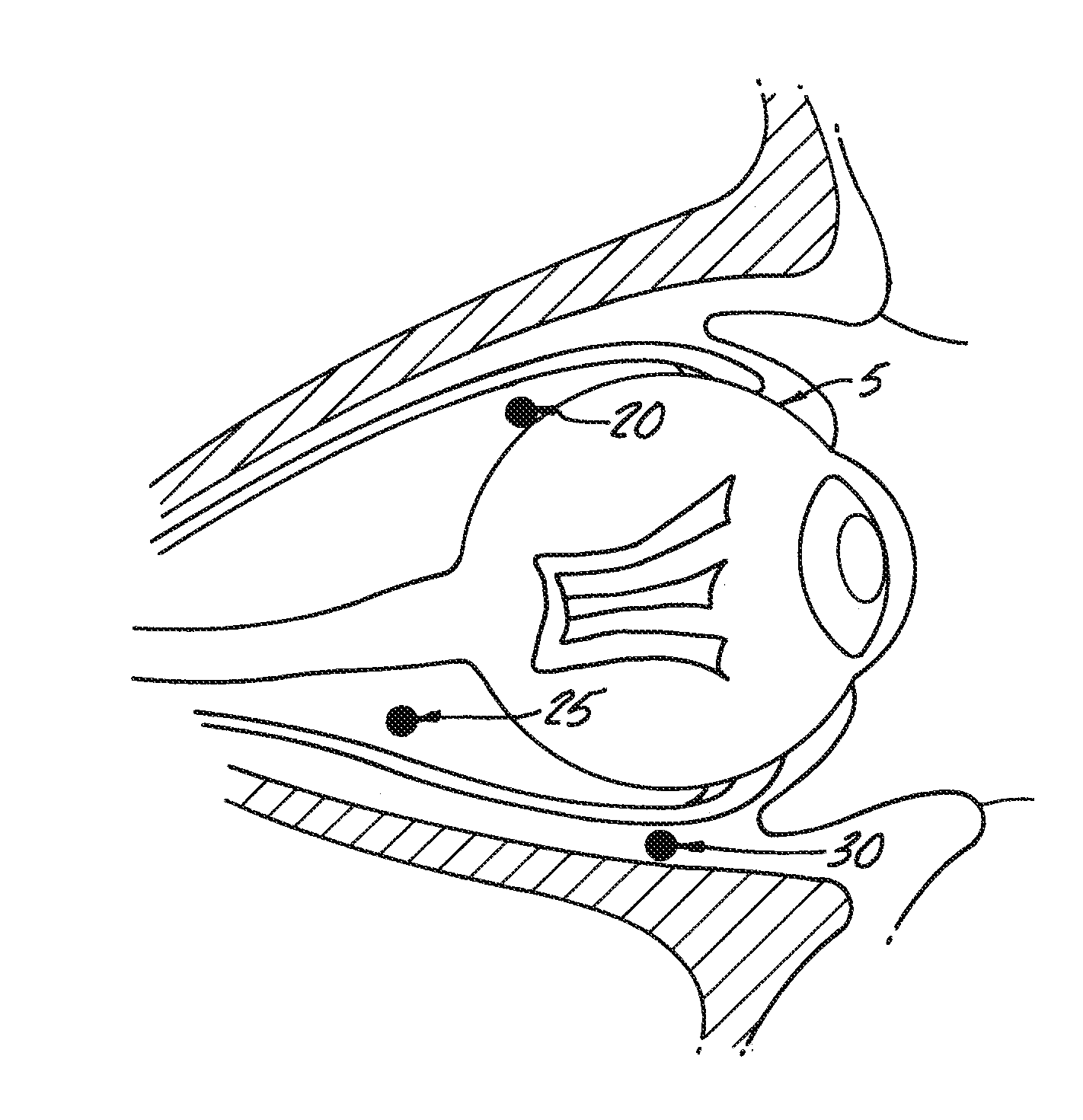Delivery of an active drug to the posterior part of the eye via subconjunctival or periocular delivery of a prodrug
a technology of prodrug and subconjunctival or periocular delivery, which is applied in the direction of drug composition, elcosanoid active ingredients, immunological disorders, etc., can solve the problems of increasing the difficulty of delivering a large amount of prodrug the disadvantage of large prodrug dose relative to the therapeutically effective amount of active drug, so as to increase the duration of action of active drug and increase the concentration of active drug duration a prodrug delivery method of an active drug delivery method, which is applied in the field of a prodrug delivery method, which is applied in the field of which is applied in the field of a subconjunctival or a technology of an active drug delivery method, which is applied in the field of a posterior part of the eye, and achieves the effect of the duration of action of an active drug duration
- Summary
- Abstract
- Description
- Claims
- Application Information
AI Technical Summary
Benefits of technology
Problems solved by technology
Method used
Image
Examples
example a
[0043]The binding of tazarotene and tazarotenic acid to the retinoic acid receptor (RAR) family receptors (RARα, RARβ, RARγ) was determined as follows.
[0044]All binding assays were performed in a similar fashion. All three receptor subtypes were derived from the expressed receptor type (RARα, RARβ, and RARγ) expressed in Baculovirus. Stock solutions of the compounds were prepared as 10 mM ethanol solutions and serial dilutions carried out into 1:1 DMSO; ethanol. Assay buffers consisted of the following for all six receptor assays: 8% glycerol, 120 mM KCl, 8 mM Tris, 5 mM CHAPS 4 mM DTT and 0.24 mM PMSF, pH-7.4 @ room temperature.
[0045]All receptor binding assays were performed in the same manner. The final assay volume was 250 μl and contained from 10-40 μg of extract protein depending on receptor being assayed along with 5 nM of [3H] all-trans retinoic acid or 10 nM [3H] 9-cis retinoic acid and varying concentrations of competing ligand at concentrations that ranged from 0-105M. Th...
example 1
Microsphere Preparation
[0047]Poly(lactide-co-glycolide) 75:25 microspheres were prepared with a tazarotene loading of 10% w / w according the amounts in the table below.
Formula: Five-Gram Batch SizeComponentUseQuantityPhase IPolyvinyl Alcohol (PVA)Stabilizer47.5 gramsPurified WaterSolvent1600mLPhase IITazaroteneActive0.5 (10%)Poly lactide-co-glycolidePolymer / Vehicle4.50 gramsMethylene ChlorideSolvent300 mLPhase IIn a five-liter beaker a solution of 3.0% PVA was prepared using a high shear impeller and a stirring rate of 400 to 500 rpm at 80° C. Once the PVA was in solution, the stirring rate was reduced to 200 RPM to minimize foaming.Phase IIPoly(lactide-co-glycolide (PLGA) was then dissolved in the methylene chloride at room temperature. Once the PLGA was in solution, tazarotene was added and brought into solution also at room temperature.
[0048]Microspheres were then prepared using a solvent evaporation technique. Phase I solution was vigorously stirred at room temperature while slow...
example 2
[0050]An aqueous suspension of tazarotene was prepared by adding tazarotene to isotonic phosphate buffered saline, pH 7.4 (IPBS) at room temperature. Twenty microliters of polysorbate 80® was added to the mixture. Finally, the tazarotene was dispersed by agitation to produce a uniform suspension of 20 mg / mL tazarotene in IPBS at room temperature.
PUM
| Property | Measurement | Unit |
|---|---|---|
| pressure | aaaaa | aaaaa |
| Temperature | aaaaa | aaaaa |
| pH | aaaaa | aaaaa |
Abstract
Description
Claims
Application Information
 Login to View More
Login to View More - R&D
- Intellectual Property
- Life Sciences
- Materials
- Tech Scout
- Unparalleled Data Quality
- Higher Quality Content
- 60% Fewer Hallucinations
Browse by: Latest US Patents, China's latest patents, Technical Efficacy Thesaurus, Application Domain, Technology Topic, Popular Technical Reports.
© 2025 PatSnap. All rights reserved.Legal|Privacy policy|Modern Slavery Act Transparency Statement|Sitemap|About US| Contact US: help@patsnap.com



